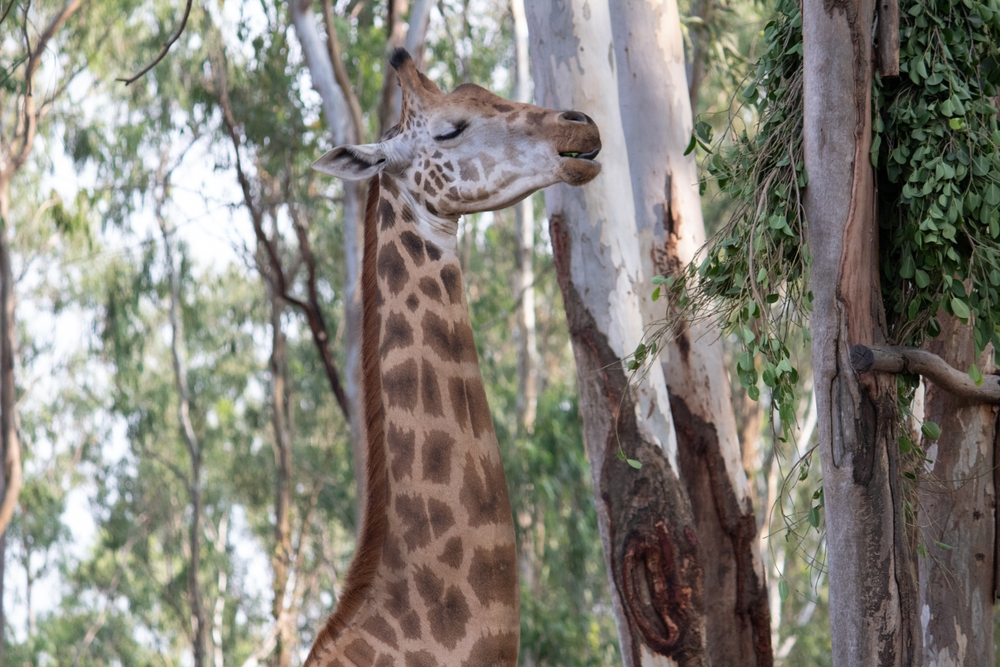Giraffes mostly sleep standing up as a defence mechanism against predators, keeping them relatively safe as they sneak in a short nap. However, this isn’t possible during certain sleep stages, and the positions giraffes adopt to cope with their extraordinarily long necks are, quite frankly, hilarious.
Giraffes are enormous animals topping heights of 4.8 to 5.5 meters (16 to 18 feet), but that isn’t enough to keep them safe from lions. One way in which they’ve evolved to deal with this threat is by sleeping very little, and in a position that means they’re ready to flee if needs be.
Giraffes don’t sleep much, and when they do it’s normally from standing.
Image credit: Balamurugan veerabathiran / Shutterstock.com
“Giraffes don’t sleep very much at all, they sleep for about 4 hours within a 24-hour period,” giraffe keeper at ZSL London Zoo Becca Keefe told IFLScience. “This sleep occurs in very short bursts lasting about five minutes. This is because giraffes are a prey species and being asleep for large amounts of time leaves them at a greater risk of predation.”
The same is true of horses who, as fellow hoofed ungulates, mostly sleep on their feet. However, this all changes when these animals reach rapid eye movement (REM) sleep, a phase that was thought to be unique to mammals and birds but has since been discovered in spiders and possibly reptiles.
Sometimes other giraffe’s butts are a more convenient pillow than your own.
Image credit: umat34 / Shutterstock.com
“When giraffes do sleep, they sleep standing up as this is the safest method. However, they do occasionally sit down to sleep.” Continued Keefe. “When giraffes enter REM sleep, which only lasts about a minute, they sometimes lose the ability to support their own head. During REM sleep sometimes their heads rest on their backs or occasionally just lull to one side causing a S shape in their neck.”
That’s right, giraffes sleep by using their own rear-ends like pillows to keep their heads in one place while they sneak in some REM sleep. This sleep phase is critical and thought to be important for cementing memories and learning – so for young giraffes like this wobbly-headed newborn, it’s an important snooze of the day.
With such enormously long necks, it’s a lot of effort getting on and off the ground, which is why sleeping on the floor is limited to just one sleep phase. It’s often said their long necks were an adaptation to reach foliage higher up than competing species, but research suggests that actually there’s a more aggressive explanation for the extreme length.
The ridiculously stubby extinct giraffe Discokeryx xiezhi fought using its head like a battering ram, and it’s thought these battles strengthened the neck, creating an evolutionary pressure for longer necks. We see this today in bizarre giraffe battles, as males swing their heads at each other when competing over a mate.
So, a long neck might make for a fleeting naptime, but it’s worth it in the end.
All “explainer” articles are confirmed by fact checkers to be correct at time of publishing. Text, images, and links may be edited, removed, or added to at a later date to keep information current.
Source Link: How Do Giraffes Sleep? Their Extraordinarily Long Necks Don't Make It Easy
